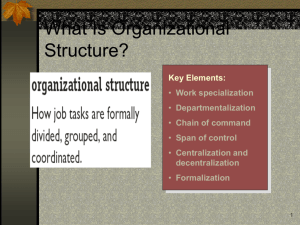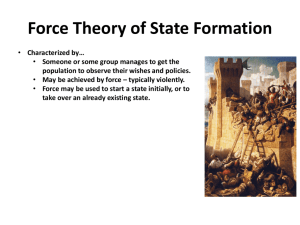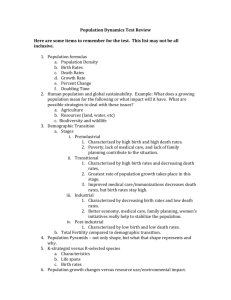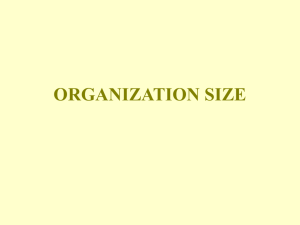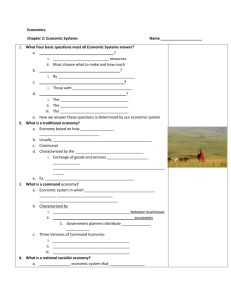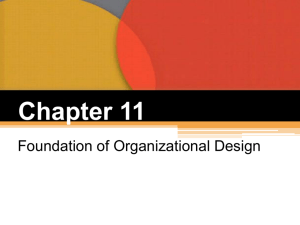HND – Tutorial 10 . solutions
advertisement
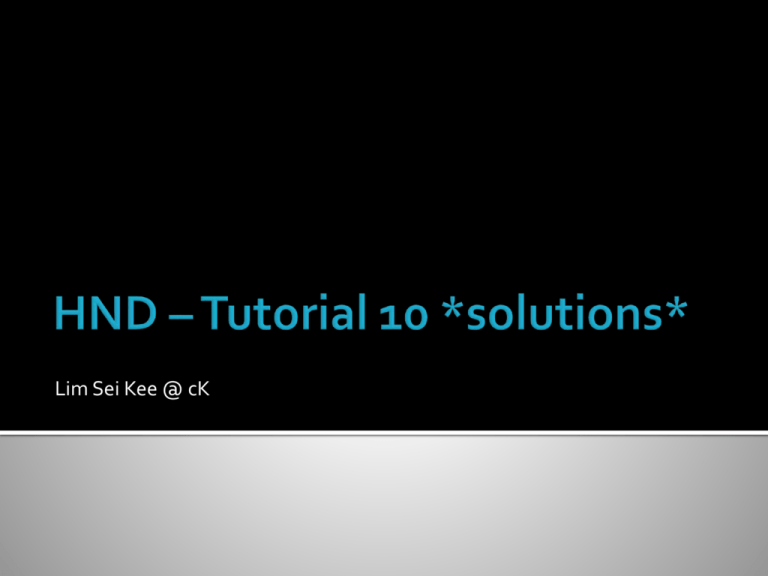
Lim Sei Kee @ cK Simple structure is a structure characterized by a low degree of departmentalization, wide spans of control, authority centralized in a single person, and a little formalization. What are the strengths and weaknesses of utilizing such structure? Strength- Fast, flexible and accountability is clear Weakness- As organization grows, it become inadequate All else being equal, tall or flat organization is more effective? WIDE- more efficient, fewer levels = fewer managers, save in management salaries. Reduce effectiveness- employee performance suffers because supervisors no longer have time to provide necessary support and leadership. Reduce cost, cut overhead, speed up decision making, increase flexibility, get closer to customers, empower employees. NARROW- maintain close control. Drawback: expensive because add levels of management, make vertical communication in the organization more complex, slow decision making and tend to isolate upper management. Encourage overly tight supervision and discourage employee autonomy. You are now tasked to design a proper organizational structure for a company. What are the six important key elements that you need to consider? The key question The answer is provided by 1. To what degree are activities subdivided into separate jobs? Work Specialization 2. On what basis will jobs be grouped together? Departmentalization 3. To whom do individuals and groups report? Chain of Command 4. How many individuals can a manager efficiently and effectively direct? Span of Control 5. Where does decision-making authority lie? Centralization and decentralization 6. To what degree will there be rules and regulations to direct employees and managers? Formalization a) Characterized by a low degree of staff division, wide extents of control, centralized authority, and low standardization b) Characterized by a high level of staff division and a dual chain of authority c) Characterized by decentralization, low standardization, and high specialization d) Characterized by decentralization, low standardization, and very little reliance on the chain of authority e) Characterized by high centralization and low staff division a) Characterized by a low degree of staff division, wide extents of control, centralized authority, and low standardization simple b) Characterized by a high level of staff division and a dual chain of authority matrix c) Characterized by decentralization, low standardization, and high specialization team d) Characterized by decentralization, low standardization, and very little reliance on the chain of authority boundaryless e) Characterized by high centralization and low staff division virtual MCQ 1. Which of these statements about organizational structure is(are) true? A] It refers to the division of labour. B] It refers to patterns of coordination. C] It refers to patterns of work flow and formal power that direct organizational activities. D] All of the above statements are true. 2. Organization structures A] affect group behavior more than individual behavior B] change rapidly to meet environmental and market changes C] contribute positively to organizational performance D] can be defined simply as activities that occur regularly 3. Work is divided into specialized jobs because: A] it potentially increases work efficiency. B] job incumbents can master their tasks quickly because work cycles are short. C] less time is wasted changing from one task to another. D] All of the above 4. Each of these are basic elements of organizational structure, EXCEPT: A] formalization B] departmentalization. C] standardization. D] centralization. 5. A flat organizational structure creates a(n) __________ span of control. A] Tall B] Narrow C] Wide D] Centralized 6. What is a problem associated with formalization? A] Rules and procedures reduce organizational flexibility. B] Employees can become alienated and disempowered. C] Rules and procedures can become the focus of attention. D] All of the above. 7. A(n) ___________ structure has a wide span of control, little formalization, and highly __________ decision-making. A] organic; decentralized B] mechanistic; centralized C] departmental; departmentalized D] formal; decentralized 8. All of these are characteristics of a company with a simple structure, EXCEPT: A] few people are employed. B] owner's direct supervision coordinates work activities. C] narrowly defined roles. D] minimal hierarchy. 9. Which structure is usually optimal for project-based organizations with fluctuating workloads? A] Functional B] Divisional C] Matrix D] Network 10. A network structure that represents several independent companies that form unique partnership teams to provide customized products or services, usually to specific clients, for a limited time are known as: A] host organizations. B] virtual corporations. C] global organizations. D] centralized organizations.
